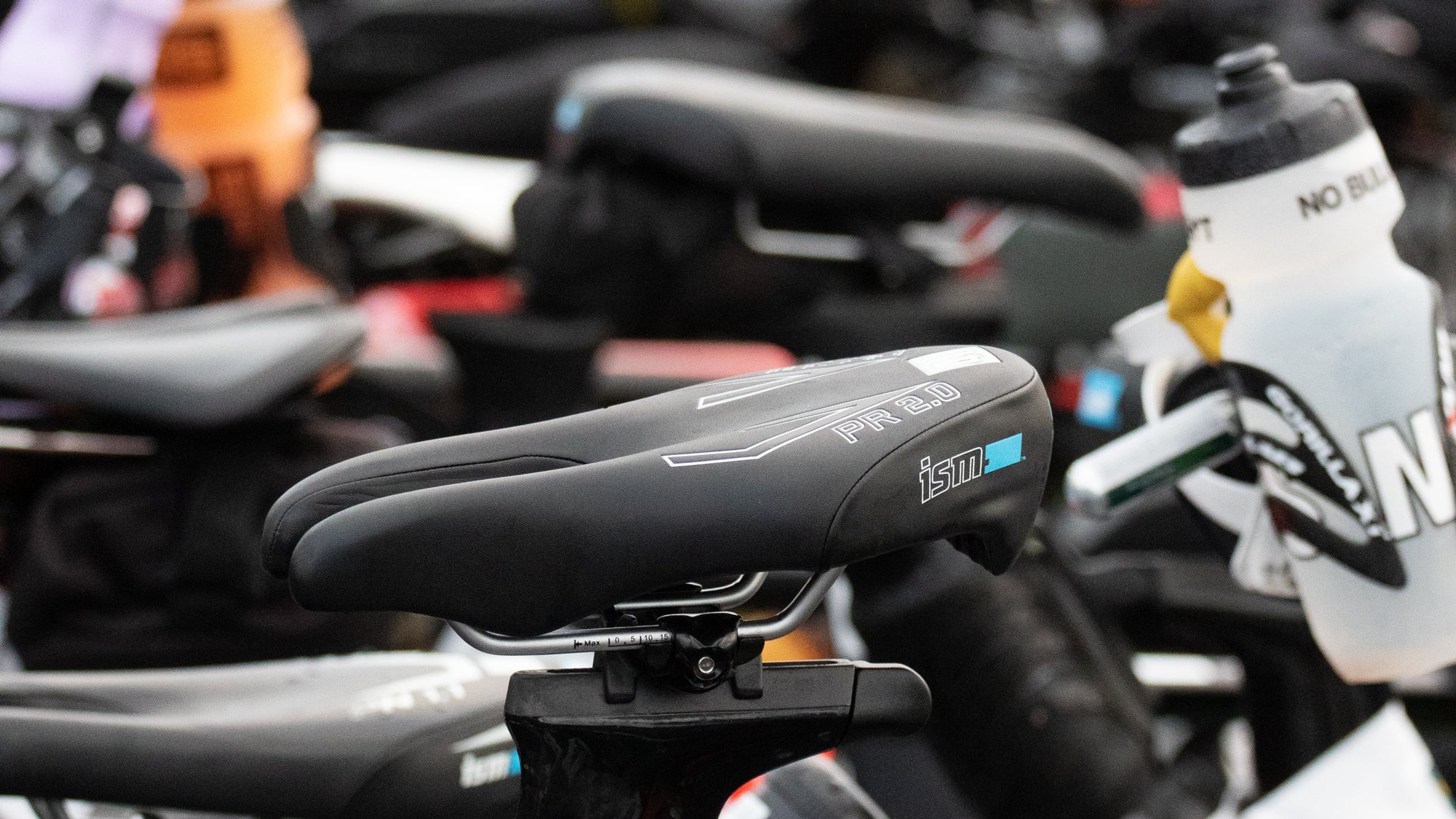Bike Saddles: A Little Savvy Will Save Your Tush

Photo: Brad Kaminski
Numb nether regions, painful urination, inflamed tissues, chafing, skin tenderness… No, it’s not a horror movie, it’s the type of discomfort that cyclists—especially triathletes—will usually endure at some point during their athletic careers. From the beginning of bikes, there has been pain. Sitting on a bike saddle is not a natural act, and regardless of your belief in evolution, we can all agree that the perineal area was not meant to support the majority of your body weight.
There is no perfect process for bike saddle selection. It can take time to get acclimated to a new bike saddle, so something that feels strange at first might eventually feel fine, while something that started off comfy may turn into a nightmare down the road (pun totally intended). So take time this winter to get your saddle sorted out.
First, ride. A bike saddle that’s tolerable on the trainer should be fine on the road. If you find your saddle monstrous, the next step is to ask yourself: Is it really the saddle’s fault? An ill-fitting bike— or poor bike shorts—could be the culprit. The best way to know for sure is to visit a pro bike fitter.
Split Bike Saddles Vs. Non Split
The pressure relief splits in saddles are commonplace these days. Quite simply, these saddles redirect pressure from areas that are not tolerant to pressure to areas that can tolerate pressure, like the bones on the underside of your pelvis. The vast majority of cyclists, when given the choice, will choose a split saddle.
Full Length Vs. Snub Nose
Snub nose saddles are a subset of split saddles that tend to look like a seat with the nose cut off and with the split extending all the way to the front of the saddle. The length and location of the split in the saddle directly correlates to the pelvic position a rider will tend to sit at. If you are riding a bike with aerobars, you will very likely require a saddle with the split extending all the way to the nose. Many popular road bike saddles do not have splits that extend all the way to the nose, and they are perfectly appropriate for road bikes since road bike positions don’t rotate the rider’s pelvis as far forward as tri bikes. Here’s another valuable lesson: Road bike saddles generally do not work well when installed on a tri bike.
Padding
The level of cushion in a bike saddle can make a big difference in the way a saddle immediately feels. Generally, too little cushion will leave the rider feeling tender after a while and too much cushion will cause the saddle to lose its shape and will put pressure on non-desirable areas. Cushion is shockingly much less important than people think: Riders can generally acclimate to a bike saddle with varying levels of cushion, as long as the shape works for them.